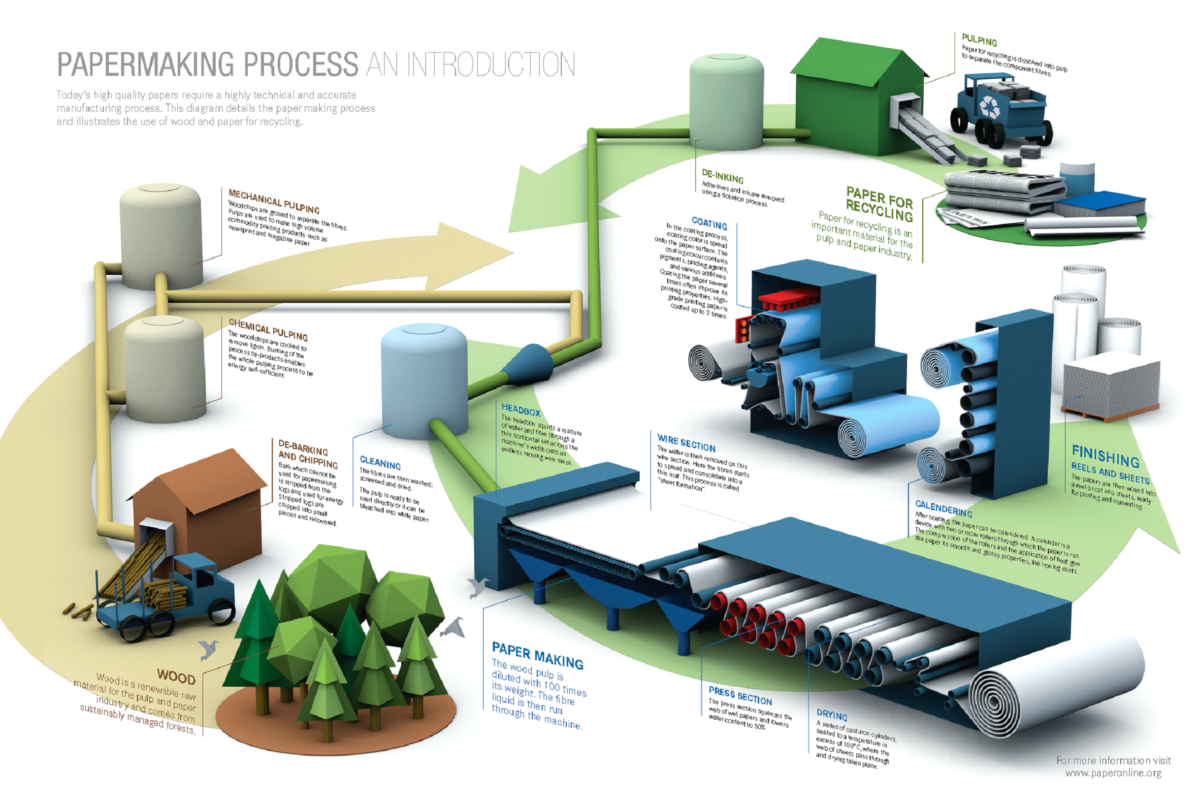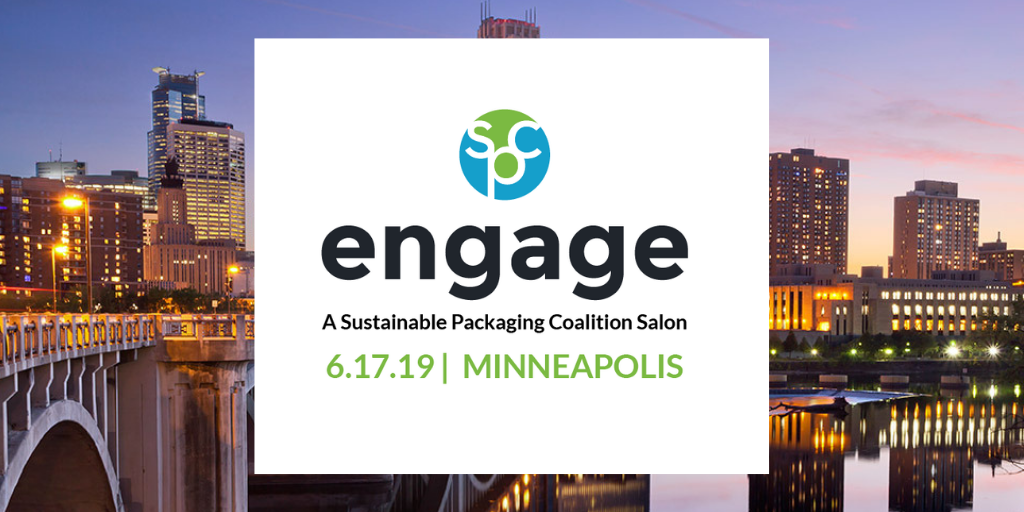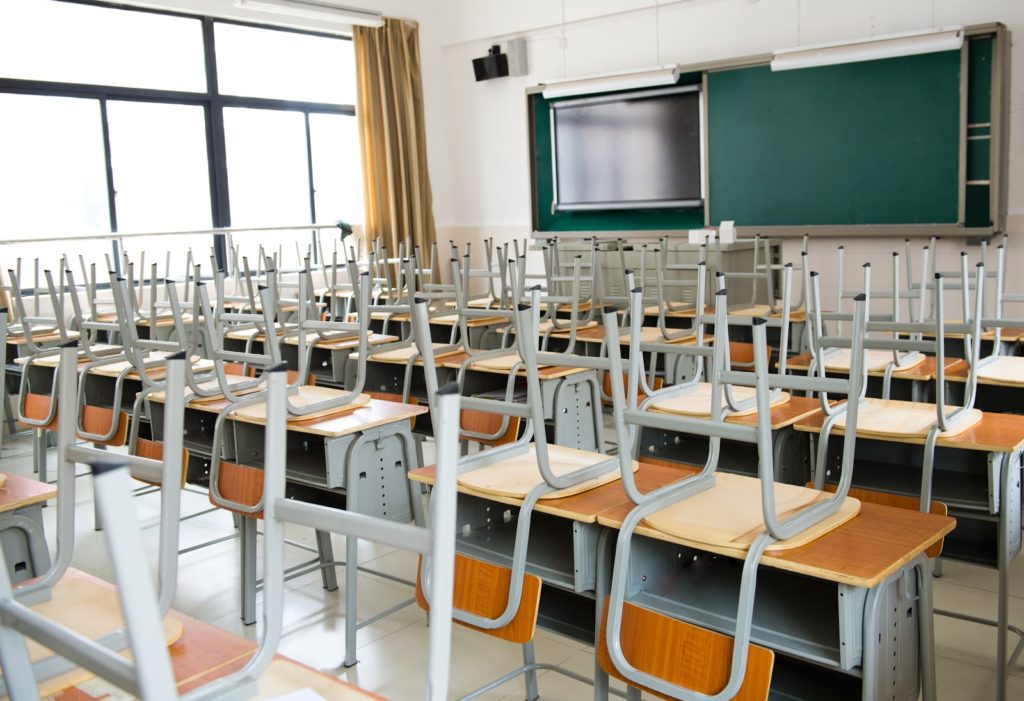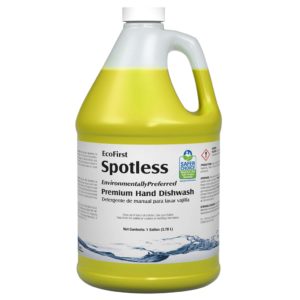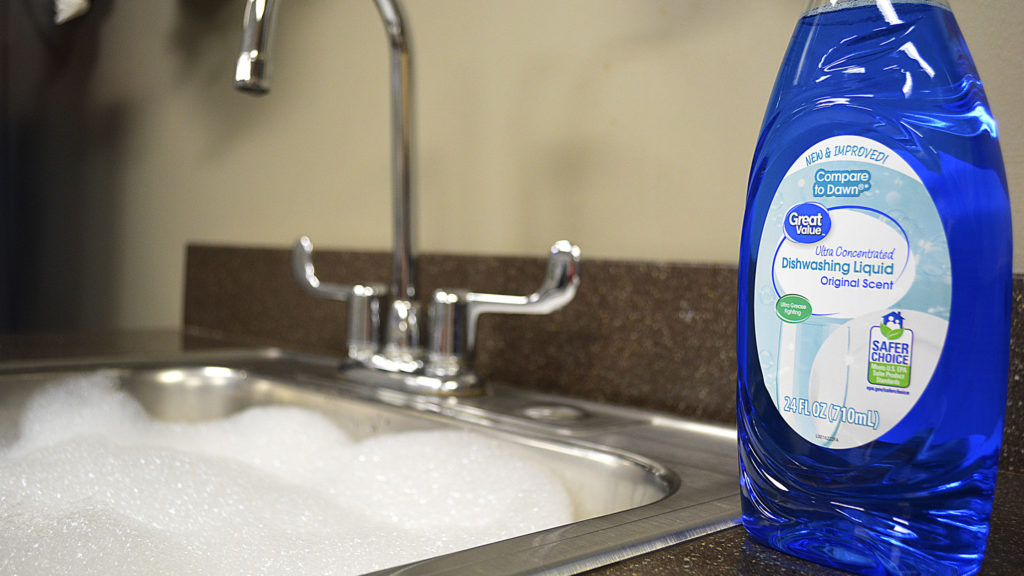Originally posted on the How2Recycle blog.
It may be tempting when you aren’t sure whether something is recyclable, to just put it in the recycling bin anyways, in a hope (or even an assumption) that “they’ll find a way to recycle it.” This is called “wishcycling.” In order to keep our recycling system healthy, it’s just as important to leave stuff out of the recycling as it is important to but the good recyclable stuff in the recycling.
Whenever you try to recycle items that you shouldn’t, it harms recycling. Sometimes those items can put recycling facility workers at risk or danger; sometimes those items cause the recycler to lose money if they tried to sort or process them (for a variety of reasons), so the recycler has to then pay to landfill the material anyway; and sometimes those items really slow down the recycling facility operations so that fewer overall materials can be processed by the facility each day, which hurts the health of the recycling business.
You should think of recycling more as a system designed to process a select suite of valuable materials to turn into something new again — not so much a Santa’s workshop where elves can magically transform everything that passes through its doors into objects of glory. The recycling system was built especially to sort and process these select materials, but not everything else. All the materials that end up as waste from our households that aren’t recyclable are either not valuable enough to create a recycling stream for, or not recyclable at a big enough scale yet.
But, you can do your part to help keep the recycling system strong, by keeping it clean and free of contaminants. Think of yourself, as a responsible recycler, as being the white blood cells of recycling… you attack the invaders and keep them out.
Here are the top things that recyclers do NOT want to see come into their facility:
1. Plastic bags and wraps
Plastic bags and some plastic wraps are recyclable — just not in your curbside bin! There are a small handful of communities in the US that can recycle bags and plastic wraps through curbside recycling. But the vast, vast majority of people need to recycle these items through Store Drop Off. Meaning, recycle those items at your local grocery store along with plastic shopping bags.
When you place these items in the curbside bin, they get wrapped on the equipment at the recycling facility, and workers have to stop the machines to climb on them to cut out the bags. And then they get landfilled. Not fun! Please look for the Store Drop Off label, take your bags and wraps with that label to the store. Click here to learn more.
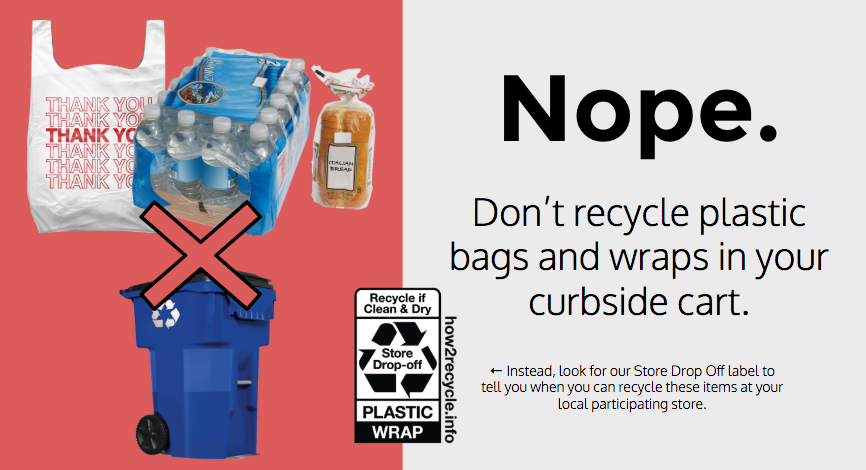
2. Bagged recyclables
We could also count on one hand how many communities ask you to put your recyclables in plastic bags before setting out for recycling. One of them happens to be my hometown of Franklin, Tennessee, and another is New York City. But again — the vast, vast majority of communities cannot recycle stuff that you put inside a plastic bag. They’ll landfill it. You’re basically wasting your recycling effort by doing this. It’s OK though if you put your recyclables in an open paper bag. The recyclables will tumble out of the bag by the time they get to the recycling facility in order to be sorted correctly, and in most communities, the paper bag will also get recycled.
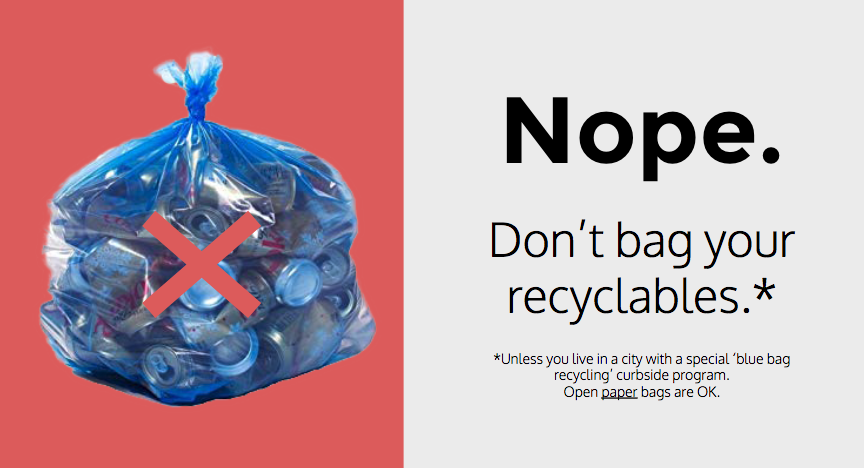
3. Anything that can ‘tangle’ around stuff
If it’s durable and stringy and you can get it in a knot, then don’t recycle it. These in the recycling industry are called “tanglers” and are looked upon with a special sort of disdain. Examples include electric cords, headphones, garden hoses, chains, wires, Christmas lights. Please do not put these in your recycling bin. They snag the equipment so the workers have to shut down operations and go cut them out of the machines.
Fortunately, Best Buy and Staples have recycling programs that accept electronics cables and connectors.
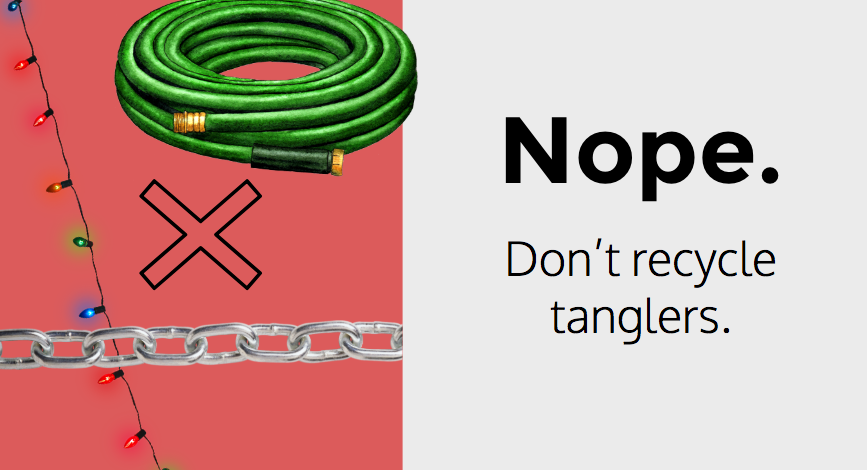
4. Hazardous materials
You should not recycle packaging that contains dangerous products — or in other words, products that are ignitable, corrosive, or toxic. Examples include oil paint, motor oil, fuel, poisons, or medical waste.
If these items are empty, and all you have left is the packaging, then throw the packaging in the trash. If you still have some leftover product inside the packaging, for example if it’s half empty , then check to see if your community has a way for you to recycle household hazardous waste (google the name of your town + “Household hazardous waste recycling”). It is important to take extra care when disposing of these hazardous items, and to do so in the proper way in your community. If not handled correctly they can harm water quality, wildlife, and human health.
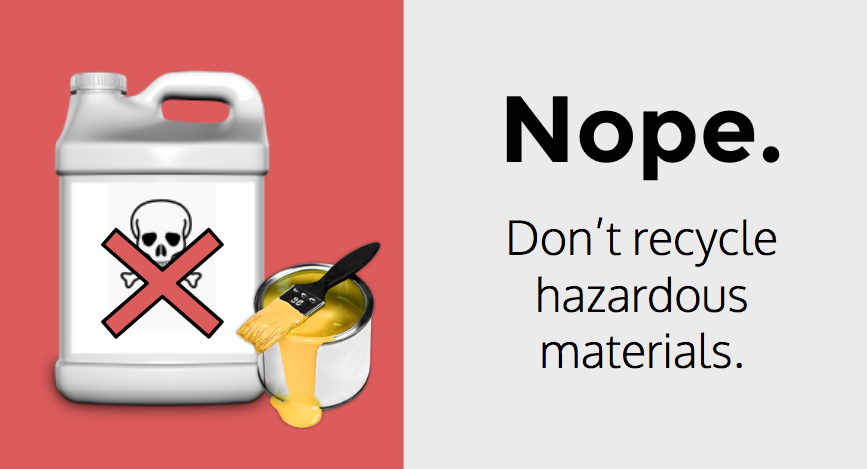
5. Batteries, including lithium ion
Batteries are not curbside recyclable; if you try to recycle them this way, they will get landfilled, but also potentially put others in danger. The corrosive nature of their ingredients makes batteries a hazardous item for recycling facilities. Rechargeable, or lithium ion batteries are of particular concern, causing very dangerous fires in some instances — keep them out of your recycling bin, and your trash bin where they also present fire risks. You have to find a special drop off location in order to recycle batteries. Check out Call2Recycle to find a place near you that can help you recycle your batteries. Or, dispose of the batteries at a local household hazardous waste collection point.
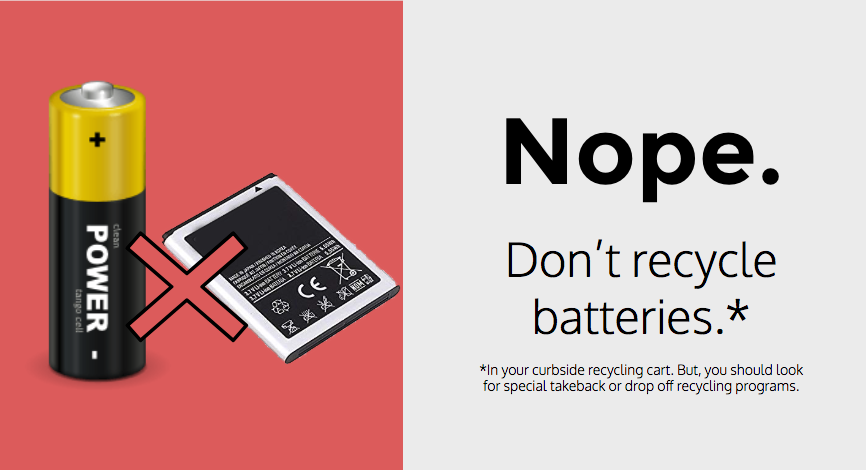
6. Diapers
More people put their dirty baby diapers in the recycling than you’d believe. This is a terrible, terrible idea and wreaks havoc at recycling facilities. If you worked at a recycling facility, would you want those coming into your building, smooshing up against your precious cardboard boxes? Put those diapers in the trash! Clean baby diapers are not recyclable either — they’re made of multiple woven materials.

7. Electronics
If you have a TV, computer, phone, keyboard, smoke detector, hair dryers, vaccuum cleaners, anything electronic–never place that item in your curbside recycling. Instead, you should donate it if it still works (for example, you can donate old phones and electronics to the National Coalition Against Domestic Violence).
If you want to recycle it, click here to find a special drop off location for recycling with Consumer Technology Association’s Green Gadgets directory. Electronics are a separate recycling stream because they contain highly specialized materials and elements.
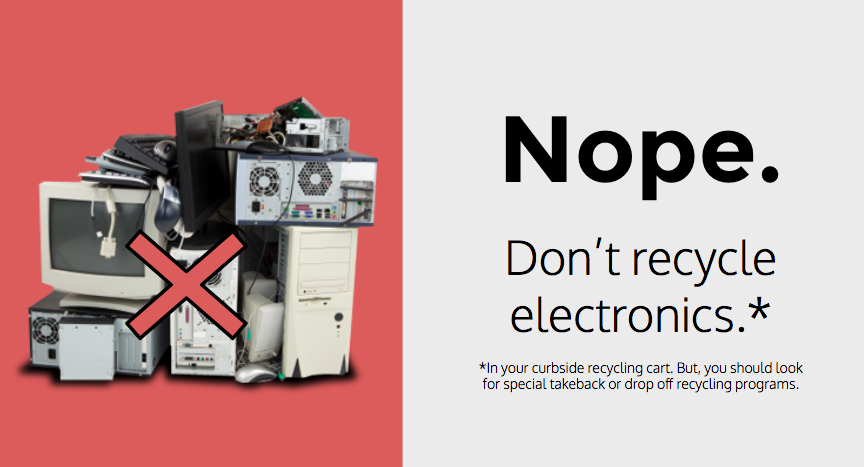
8. Food & food soiled recyclables
The best way to dispose of food waste is by composting it — either in your backyard, or through a community composting program that may be available to you. But you should never put food into the recycling bin. What I don’t mean by this is, never put any food residue in there — not all the packaging you recycle is going to be, or should be, perfectly clean all the time (because we need to save water, too). But please do not put any big food hunks, or gross, greasy, or otherwise dirty stuff into your recycling bin. The cleaner the recycling stream is, the less contamination there is for the recyclers to deal with. That means better health for the recycling stream. A good rule of thumb: ”no yuck!”
A little bit of food residue is sometimes fine — click here to read when you should be rinsing your recyclables. Quick rule of thumb: it should be relatively clean & dry, but no need to make everything spotless (you can read more in depth about it here). As for the pizza box debate: to recycle, or not to recycle? We are on Team Recycle It. “So long as there aren’t pizza slices still in there, or empty ranch cups,” says one of our paper recycling experts. “Paper recyclers are accustomed to smaller amounts of grease, but not food.”
What this means is that if you have a foam takeout container that’s filled with leftover Thai food — do not put the food in the recycling bin. Compost or discard the food waste and see if your community accepts clean foam for recycling (fewer than 20% of communities in US can recycle foam).
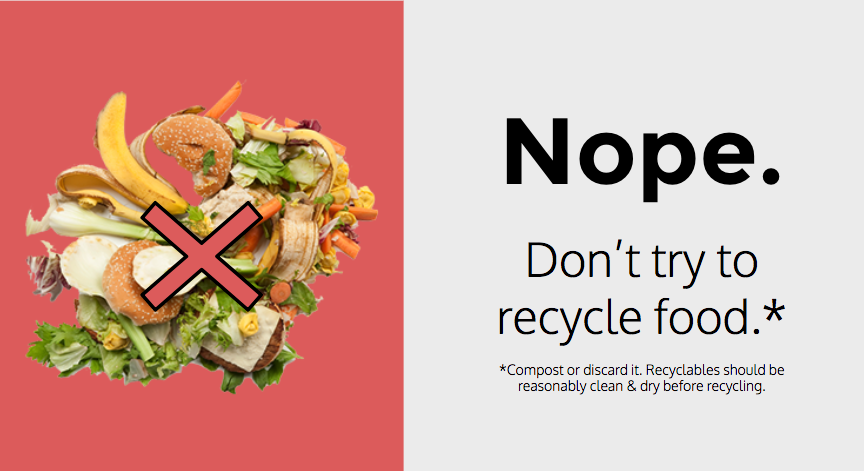
9. Propane cylinders
Nope. These cause big headaches for recyclers. See if you can return empty propane cylinders to where you purchased them. If not, check to see if your community has a household hazardous waste recycling program — propane tanks should be included in most of those programs. In some areas, there are twice a year events to drop off household hazardous waste for recycling.

10. Multi-layer bags, pouches and wrappers, like potato chip bags
It does come by surprise to many people that most packaging that’s flexible — meaning, you can ball it up — is not recyclable. There ARE some wraps and bags that you can recycle via Store Drop Off. But, the vast majority of pouches, crinkly bags, and other flexible packaging like candy or granola bar wrappers, or baby food pouches, should go into the trash because they are made of many layers of different materials. Look for our Not Yet Recycled label to tell you when you should place these items in the trash instead of trying to recycle them. If you put them in your curbside bin, they will be landfilled.

Some companies like TerraCycle have special takeback programs for non-recyclable packaging.
11. Bulky plastic items like plastic furniture, laundry baskets, and plastic playground sets (sometimes! Check Locally!)
Some communities recycle these, and some do not. Most bulky plastics are a high volume and high value recyclable plastic, but communities do differ on how they accept it for recycling. According to the Association of Plastic Recyclers, “New York City accepts bulky rigid plastics in their curbside collection program, smaller communities like Northampton, Mass. have special collection days, while others choose to have a drop off program.” You should always check with your municipality or recycling coordinator first before placing these items in your curbside bin. If a recycling facility is not set up to accept these items, it can cause problems.

12. Textiles & clothing
Clothes just aren’t recyclable through curbside recycling, but there are special take back programs like H&M’s. Or, if the clothes are still in good shape, you should donate them. Keep textiles out of your recycling bin.

13. Hangers
Hangers get tangled up on equipment at recycling facilities. Some of them may technically be made of a recyclable plastic or metal, but their shape makes it likely that they’ll cause problems — they will not get recycled. Leave these out of your recycling.
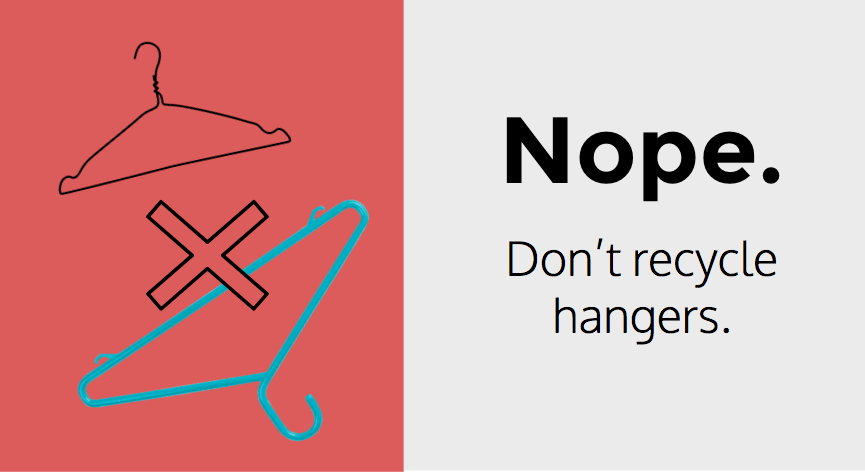
14. Ceramics
Any pottery, dishes or other household items made of ceramics aren’t recyclable. Either donate usable items to a place like Goodwill, or otherwise put them in the trash.

15. Wood
Sometimes you will encounter wood in things like ice pop sticks, or much bigger pieces for protective packaging for furniture or appliances. Wood is not recyclable. However, you could check to see if you have a composting program in your community. If you do, they may or may not accept wood items, depending on size and type of wood.
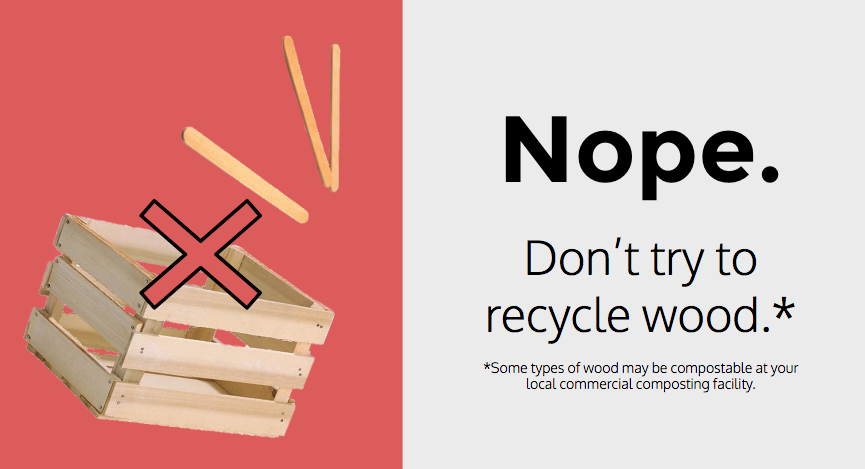
16. Light bulbs
Similar to batteries and electronics, light bulbs have special recycling streams. You need to take them to a special drop off location that accepts them. This article explains the different ways to find where to recycle light bulbs near you, depending on light bulb type. There are also stores like Batteries Plus Bulbs that collect certain light bulbs for recycling.

17. Window panes & drinking glasses
Not all types of glass are recyclable. The glass that windows are made of is actually a different type of glass than the kind used in making packaging — it’s meant to be a lot more durable. Similarly, the types of glass that made our glassware to drink out of at home (or things like vases) are different than glass packaging (but mason jars are OK to recycle). The reason is they need to withstand different temperatures, and thus have a different melting point than glass packaging. There is not a system set up at glass recyclers to handle these, so put these in the trash.
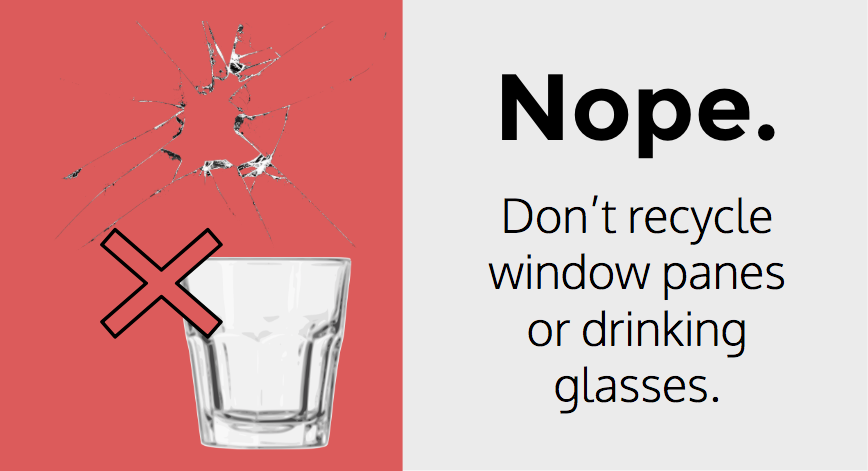
18. Bowling balls

According to our many contacts in the recycling community, in every city, nearly every week or month, someone’s trying to recycle a bowling ball. It’s kind of funny… except it’s not funny to recyclers! Keep these things out of the recycling bin and we’ll all be happy. Maybe your local bowling alley would accept your old ball as a donation…
When in doubt, leave it out!
Always look for the How2Recycle label to tell you exactly what to do with packaging. The How2Recycle program issues over 70 new How2Recycle labels to our members each day, and is currently on tens of thousands of products. So keep an eye out for more labels to appear on your favorite products so you can know exactly how to help recycling.








